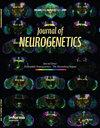社论/前言:韩国的神经遗传学创新。
IF 2
4区 医学
Q3 GENETICS & HEREDITY
引用次数: 0
摘要
本文章由计算机程序翻译,如有差异,请以英文原文为准。
Editorial/preface: Neurogenetics innovation in South Korea.
Expanding the representation of research from countries beyond Europe and North America is a goal for the Journal of Neurogenetics. This special issue is designed to highlight the flourishing discipline of Drosophila neurogenetics in South Korea. The aim is to provide readers with a snapshot of the diverse research areas that are at the cutting edge of the field. Neurogenetics, the single-gene approach to study a wide range of neurobiological phenomena from the assembly of the nervous system, neurophysiology and circuit function to animal behaviors, has withstood early criticisms. Today, it stands as a fullyfledged and flourishing field. Early research efforts were focused on neural development and behavior, for which many genetic tools were produced. As these tools became more sophisticated, they were utilized to delve deeper and provide better mechanistic insights. The evolution of Drosophila neurogenetics in South Korea remarkably mirrors this progression. In the 1990s, a vast array of mutant lines was generated to study neural development, which enabled researchers to extend their investigations beyond their original questions. This expansion of research horizons fueled the creation of new and more advanced genetic reagents. This cycle of innovating with old tools, which eventually leads to the development of new ones, is a perfect encapsulation of the spirit of neurogenetics. This special issue is structured into four sections, beginning with the molecular mechanisms of neurodegeneration (Cha et al., 2022; Lee, Jo, et al., 2022), followed by the sensory modulation of sleep and arousal (Kim et al., 2022; Lee & Lim, 2022), then the use of machine learning to interrogate animal behaviors (Kim, An, et al., 2023; Kim, Kim, et al., 2023), and finally, nutrient sensors in feeding and non-feeding behaviors (Oh & Suh, 2022; Kim et al., 2023; Yoon et al., 2022). These studies offer exciting new findings as well as sketch out the future directions for the field in South Korea and around the world.
求助全文
通过发布文献求助,成功后即可免费获取论文全文。
去求助
来源期刊

Journal of neurogenetics
医学-神经科学
CiteScore
4.40
自引率
0.00%
发文量
13
审稿时长
>12 weeks
期刊介绍:
The Journal is appropriate for papers on behavioral, biochemical, or cellular aspects of neural function, plasticity, aging or disease. In addition to analyses in the traditional genetic-model organisms, C. elegans, Drosophila, mouse and the zebrafish, the Journal encourages submission of neurogenetic investigations performed in organisms not easily amenable to experimental genetics. Such investigations might, for instance, describe behavioral differences deriving from genetic variation within a species, or report human disease studies that provide exceptional insights into biological mechanisms
 求助内容:
求助内容: 应助结果提醒方式:
应助结果提醒方式:


